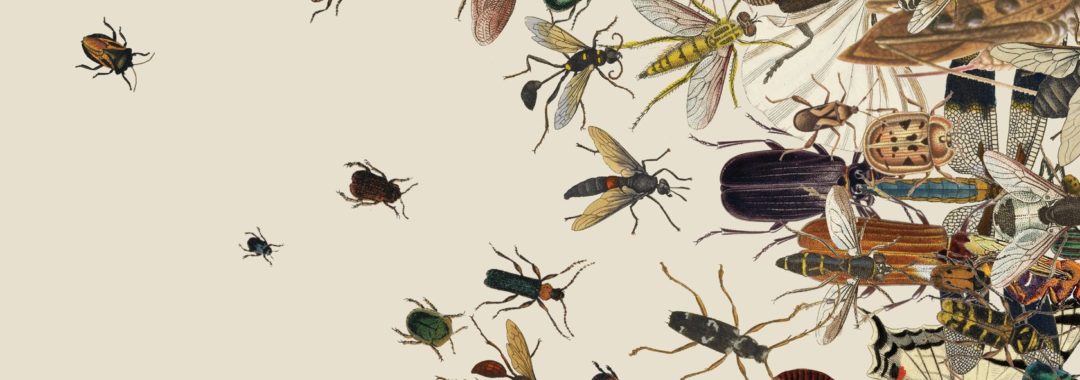We tend to respond to cautions about Climate Change and environmental pollution singularly through the lens of their "affects on human life and economy". This only further illustrates the magnitude of our ignorance. With #45 extolling the wonders of his brain and "gut feelings" and the Gang of Plutocrats (GOP) valuing everything by the effects on next quarters profits, we seldom get a reasonable and scientific look at what is actually happening. When we get the opportunity we should invest the time.
The article linked below, The Insect Apocalypse Is Here What does it mean for the rest of life on Earth? was written by Brooke Jarvis and found in The New York Times. It is just such an article, warranting a thorough reading. It sites a multitude of signs most of us are just to busy to pay attention to, much less analyze. Headlines around the world (in stories we seldom see) are "warn(ing) of an 'insect Armageddon'." Here are a few striking points extracted from Jarvis's article, but please read the entire article - you will feel better for doing so.
- "Sune Boye Riis was on a bike ride with his youngest son, enjoying the sun slanting over the fields and woodlands near their home north of Copenhagen, when it suddenly occurred to him that something about the experience was amiss. Specifically, something was missing.It was summer. He was out in the country, moving fast. But strangely, he wasn’t eating any bugs..."
- "In the United States, scientists recently found the population of monarch butterflies fell by 90 percent in the last 20 years, a loss of 900 million individuals; the rusty-patched bumblebee, which once lived in 28 states, dropped by 87 percent over the same period. With other, less-studied insect species, one butterfly researcher told me, 'all we can do is wave our arms and say, It’s not here anymore!' Still, the most disquieting thing wasn’t the disappearance of certain species of insects; it was the deeper worry, shared by Riis and many others, that a whole insect world might be quietly going missing, a loss of abundance that could alter the planet in unknowable ways. 'We notice the losses,' says David Wagner, an entomologist at the University of Connecticut. 'It’s the diminishment that we don’t see'."
- A "German study found that, measured simply by weight, the overall abundance of flying insects in German nature reserves had decreased by 75 percent over just 27 years. If you looked at midsummer population peaks, the drop was 82 percent."
- We think we know a lot about the world of insects and "yet entomologists estimate that all this amazing, absurd and understudied variety represents perhaps only 20 percent of the actual diversity of insects on our planet — that there are millions and millions of species that are entirely unknown to science."
- "Entomologists also knew that climate change and the overall degradation of global habitat are bad news for biodiversity in general, and that insects are dealing with the particular challenges posed by herbicides and pesticides, along with the effects of losing meadows, forests and even weedy patches to the relentless expansion of human spaces. There were studies of other, better-understood species that suggested that the insects associated with them might be declining, too. People who studied fish found that the fish had fewer mayflies to eat. Ornithologists kept finding that birds that rely on insects for food were in trouble: eight in 10 partridges gone from French farmlands; 50 and 80 percent drops, respectively, for nightingales and turtledoves. Half of all farmland birds in Europe disappeared in just three decades. At first, many scientists assumed the familiar culprit of habitat destruction was at work, but then they began to wonder if the birds might simply be starving.
- "The current worldwide loss of biodiversity is popularly known as the sixth extinction: the sixth time in world history that a large number of species have disappeared in unusually rapid succession, caused this time not by asteroids or ice ages but by humans." But our understanding of the concept of biodiversity is very limited. "What we’re losing is not just the diversity part of biodiversity, but the bio part: life in sheer quantity. While (Jarvis) was writing this article, scientists learned that the world’s largest king penguin colony shrank by 88 percent in 35 years, that more than 97 percent of the blue fin tuna that once lived in the ocean are gone. The number of Sophie the Giraffe toys sold in France in a single year is nine times the number of all the giraffes that still live in Africa."
- "It is estimated that, since 1970, Earth’s various populations of wild land animals have lost, on average, 60 percent of their members. Zeroing in on the category we most relate to, mammals, scientists believe that for every six wild creatures that once ate and burrowed and raised young, only one remains. What we have instead is ourselves. A study published this year in the Proceedings of the National Academy of Sciences found that if you look at the world’s mammals by weight, 96 percent of that biomass is humans and livestock; just 4 percent is wild animals."
- "Scientists have begun to speak of functional extinction (as opposed to the more familiar kind, numerical extinction). Functionally extinct animals and plants are still present but no longer prevalent enough to affect how an ecosystem works. Some phrase this as the extinction not of a species but of all its former interactions with its environment — an extinction of seed dispersal and predation and pollination and all the other ecological functions an animal once had, which can be devastating even if some individuals still persist."
